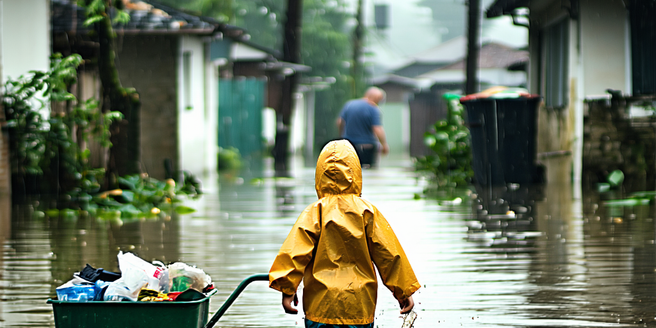
Understanding Flood Risks and Impact on Children
Flood-prone areas pose significant risks to children, mainly due to their physical vulnerabilities and limited understanding of the dangers. Rapid water currents can sweep them away, while contaminated water and debris can lead to injuries or infections. In addition to physical safety, addressing their emotional needs is crucial. To mitigate these risks, communities must invest in infrastructure and early warning systems. Emotional distress is another crucial factor, as witnessing floods can cause anxiety and fear. It’s imperative to educate children about flood risks, helping them recognize warning signs and emphasizing the importance of staying with a responsible adult during such events. Understanding these risks enables communities to safeguard children effectively, ensuring their well-being amidst natural calamities.
Effective Evacuation Plans for Families
Creating a family-specific evacuation plan is crucial when living in flood-prone areas. Start with identifying safe evacuation routes and ensure every family member knows them. It’s also important to stay updated on local weather forecasts and flood warnings. Practice regular drills to build familiarity with the procedure. Discuss potential scenarios to prepare for unexpected challenges during an evacuation. Assign roles, such as who will gather essential items or assist children and pets. Keep an emergency kit with crucial supplies like medical records, water, and snacks, ready at all times. Communication is key; establish how family members will stay in touch during an emergency. By having a well-structured plan, families can evacuate swiftly, ensuring everyone’s safety in a flood crisis.
Essential Safety Gear for Kids During Floods
When floods occur, ensuring children are equipped with the right safety gear is vital. Life jackets are a must, providing buoyancy in rapidly rising water. Waterproof boots and raincoats keep them dry and reduce the risk of infections from contaminated water. Equipping children with knowledge on how to use this gear effectively can further improve their safety. It’s important to regularly check and maintain this gear to ensure its effectiveness during an emergency. A flashlight can aid visibility in low-light conditions, helping navigate in emergencies. It’s also beneficial to have a whistle, allowing kids to signal for help if needed. Preparing this gear beforehand and familiarizing children with its use increases their safety during floods, empowering them with the knowledge and tools to protect themselves.
Creating a Safe Environment at Home Amidst Floods
Flood safety at home begins with understanding vulnerabilities and implementing measures to mitigate risks. Elevate electrical appliances and secure heavy furniture to prevent injuries. It is also crucial to regularly review and update your flood preparedness plan. Store important documents and valuables in waterproof containers. Create safety zones in your home, higher grounds where family members can gather during mild flooding. Seal cracks in walls and install flood barriers to keep water out. Having an emergency kit ready is essential for quick response during an unexpected flood. Educate children about safety practices, including avoiding outlets and staying away from floodwaters. By making homes flood-ready, families can protect what’s vital and create a safer environment for children amidst uncertainty.
Educational Programs on Flood Preparedness for Kids
Teaching children about flood preparedness is crucial for their safety. Schools and community centers can offer programs that include interactive workshops and simulations, allowing kids to experience emergency scenarios safely. For example, they might use virtual reality to simulate a flood situation, helping students understand the potential impact firsthand. Lessons can cover recognizing flood signs, emergency contacts, and safe behaviors during floods. Additionally, these programs can help children develop critical thinking and decision-making skills in high-pressure situations. Incorporating games and storytelling makes learning engaging and memorable. Parents and educators should reinforce these teachings at home, involving children in family emergency planning and drills. By providing them with the skills and confidence through education, children can become proactive participants in their safety during flood events.
